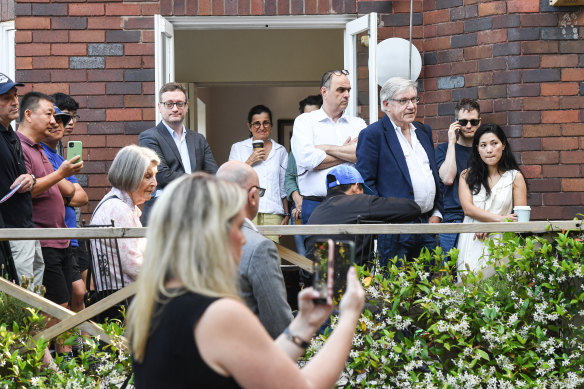This was published 3 months ago
The graph that shows why the bank of mum and dad will be on the hook this year
By Jim Malo
House prices have risen even though the amount that buyers can afford to pay for a home has fallen and the gap is now so wide it would take as many as 10 interest rate cuts to close it.
That level of rate cuts is an unlikely hypothetical scenario for a central bank that’s tipped to deliver a likely maximum of three cuts this year.
The Reserve Bank announced on Tuesday that it would hold interest rates steady at 4.35 per cent, after hiking them at the fastest pace in a generation over the past two years, warning it would be guided by economic data in terms of any future moves up or down.
The earlier hit to borrowing capacity and confidence caused house prices to dive, but they have since rebounded, despite rates remaining high –leaving home ownership increasingly out of reach for those without family help.
AMP chief economist Dr Shane Oliver said that house prices are now about 30 per cent less affordable than they should be, based on a comparison with what Australians can afford to borrow and therefore pay for a home.
Historical analysis of the measure shows that the two figures are typically linked and over time they will usually follow the same trend.
“It’ll close eventually. But it’s debatable,” Oliver said. “In terms of will it close this year, to get that to happen it would require a massive cut in interest rates. We’re looking at three, but you’d need 10.”
The median dwelling price across the combined capital cities is about $789,000, but only a dwelling that costs $427,000 or less would be considered affordable to someone with a 20 per cent deposit and average full-time earnings.
The measure compares the figures at a trend level, which shows the two numbers tend to move in lockstep, outside rapid changes in RBA rates.
“This time around, it’s been a bit odd. House prices started to follow capacity to pay down but turned around and went up again and went to record highs, on CoreLogic numbers, despite capacity to pay remaining pretty poor,” Oliver said.

Economists suspect wealthy buyers are driving up house prices. Credit: Peter Rae
“It looks odd. You have to question whether it’s going to be sustained. That’s the big mystery with that chart.”
Oliver said there were a few potential answers to why the trend had uncoupled, and why house prices could continue to rise.
“Is it the bank of mum and dad? Is it saving buffers built up through the pandemic?” he said. “In most consumer surveys, people are sceptical of housing. You can make the argument that the rebound of prices was because of a narrow group of buyers who were cashed up.
“Therefore, rebounds have come up on low volumes which may not be sustainable.”
Impact Economics and Policy lead economist Dr Angela Jackson said the decoupling of trends was troubling, because of how much more difficult it would make purchasing property for buyers without access to generational wealth.
“We’ve got to a point where you can’t own a property in this country unless your parents support you, it has a big impact on equity,” she said. “It’s no longer a connection between your own efforts and your rewards in life. That isn’t good for society in terms of equity and future productivity.”
Jackson said she thought the primary way people could afford property at a time when this measure of affordability was deteriorating was through pandemic savings.
“Household savings went up significantly during the pandemic period due to constrained demand and government stimulus, therefore capacity and income have decoupled,” she said. “The lift in savings during the pandemic period has lifted people’s capacity to spend money on property.
“Getting help from parents is becoming more and more common and a bigger proportion of the purchase price, and we expect that to grow as the inheritance from Baby Boomers gets passed into the economy.”
The Property Bureau buyers’ advocate Alastair Mairs said the bank of mum and dad was so prevalent, it was common to see upgrading buyers making use of their parents’ wealth.
“That’s a huge factor. Even second-time home buyers wanting to start a family, they have family pitching in an early inheritance,” he said. “[And] people in the pandemic who saved and lived with mum and dad and all that, they’ve suddenly found themselves in a position to do something.”
Mairs said high interest rates were also pushing mum and dad investors out of the property market because of their high reliance on finance for investing.
“But the rich will get richer, as it always is. It’s the cashed-up investors who are taking the opportunity to make the most of 4 per cent to 5 per cent rental yields,” he said.